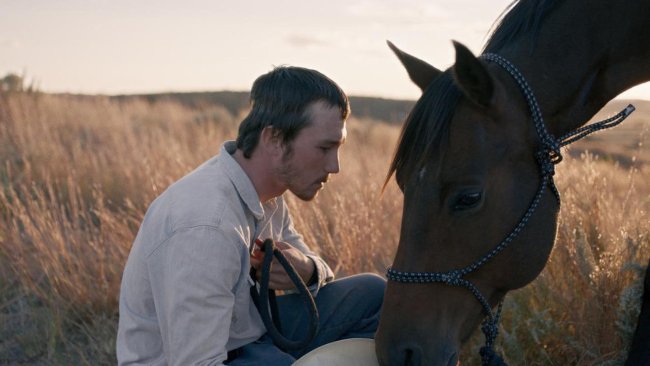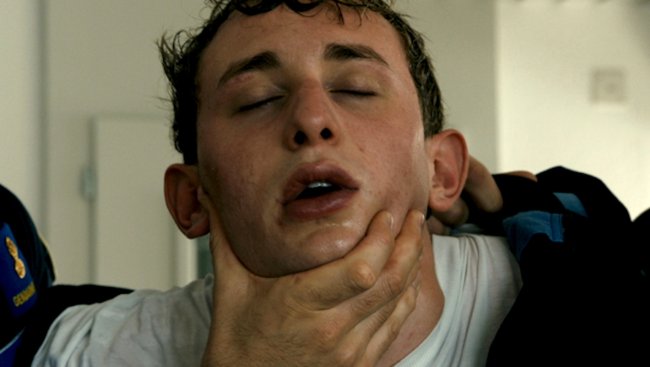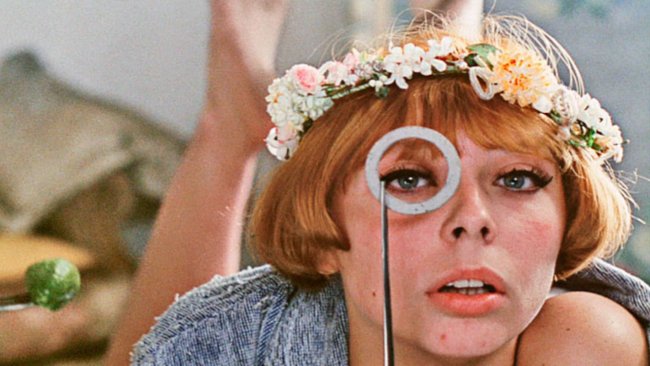Controfigura | Rä di Martino
[…] This prismatic multiplication of roles is able to highlight an interesting social reflection (and criticism) that «Controfigura» is bringing to us: a social structure of power becomes apparent.
[…] «Controfigura» becomes a sort of metaphysical still of «The Swimmer», where the tragic output of Ned’s athletic swimming-home reverberates in the multiple (body) doubles (controfigure) of an awkward remake.
[…] The spiral of the different “meta-” functions – meta-cinema, meta-film, meta-actor – draws a movement of wander and hesitation where all the references disappear. What we do experience is the nakedness of existence.
Text: Giuseppe Di Salvatore

Putting forward the making-of of a film in a film is a formal gesture that both tries to catch a documentary reality and aims at a reflection on cinema itself. Rä di Martino’s Controfigura joins these traditional objectives, which are somehow intensified through original developments of the documentary and the reflective sides of the film. Concerning the reality on which her making-of is focusing, we find ourselves not only behind the scenes of a film shooting, but more precisely in Morocco, a country that has for long time served the scopes of the cinema industry. In fact, di Martino’s project was born as a development of her photographic work on the abandoned sites of cinema settings in Morocco, and we can well see Controfigura as a sort of documentary on the destiny of cinematic setting locations.
Here we find a first reflective element on cinema, which fits the self-reflective form of filming the process of filmmaking. After some minutes of watching the movie, we realise that there is more than one layer of making-ofs: we cannot but suspect that the making-of where Italian actors are coping with the scenes in the villas of Marrakesh is equally staged, and the images of normal urban life in the town where Moroccan actors are cast for “a” film (which one now?) seem to profile a sort of making-of of the making-of. This overlapping of layers is paralleled by the overlapping of the actors and their characters: in a dizzying continuity between acting and non-acting scenes, we quickly lose any contact with a clear distinction between the person and the actor. There is just a jumble of roles, the social role of the normal person, the more or less skilful role of the cinema professional, the cinematic role of the character in the film – actually the films. This prismatic multiplication of roles is able to highlight an interesting social reflection (and criticism) that Controfigura is bringing to us: a social structure of power becomes apparent, where the Italian troupe, and more generally the professional mediation, create a bridge between the lower Moroccan class and its high society, which is mainly occupied by rich expats locked in their luxurious villas.
But of which film is the making-of in Controfigura? Nothing but Frank Perry’s marvellous The Swimmer (1968), where Ned, a superb Burt Lancaster, is “swimming home” through the pools of their friends and the town. Putting aside John Cheever’s brilliant novel that inspires the movie(s), the sharpest difference between Perry’s original and di Martino’s indirect remake is that the arrow-like dramaturgy of the first one is completely lost in the ocean of hesitations of the second one. The maze of making-ofs and obstacles in the realist story of Controfigura works rather as a suspension of the incumbent atmosphere of decadence in The Swimmer; Controfigura becomes a sort of metaphysical still of The Swimmer, where the tragic output of Ned’s athletic swimming-home reverberates in the multiple (body) doubles (controfigure) of an awkward remake.
The two films share an obvious and a deeper connection, however. The obvious connection involves the theme of the deconstruction of the values and the imagination of a wealthy society celebrating happiness and success. The “American Sunday” that the Hollywood imagination has represented in the name of the social winners collapses, and reveals a Sunday afternoon of desolation. For the self-reflection on cinema, this means that the dream of cinema carries with itself a reality that is also made of ruins, abandonment, and human weakness. The decadent beauty of the Moroccan leftovers of the cinema settings conflates then with the clumsy attempts of the actors in their confrontation with the self-eroding story of an evanescent glory. Through the lens of fragility and mortality, the Moroccan reality of wealthy expats enjoying their privileged comforts suddenly lends a bitter flavour to their villas and swimming pools.
These critical notes of Controfigura are not the last words of Rä di Martino’s work. Even if the self-reflective line of this film is prevalent – making it a perfect example of meta-cinema – the Italian artist has no solid opinion of what cinema is, of the distinction between the real and the imaginative, and so on. She is clearly more interested in investigating the emotional strata of the people that attempt to navigate the paths between the constraints of reality and the appeal of imagination. Controfigura is less a theoretical pamphlet or an intellectual exercise, than it is a film conveying a particular experience to the viewer – and I think that this experience can be disclosed exactly when we recognize the final inconclusiveness of the theoretical reflections. The spiral of the different “meta-” functions – meta-cinema, meta-film, meta-actor – draws a movement of wander and hesitation where all the references disappear. What we do experience is the nakedness of existence.
To this extent, more than the classical documentary form, it is the form of the “fake-fiction” that works particularly well – that in Controfigura remains jumbled up with genuine documentary aspects. This is the reason why the most complete fictional sequences of di Martino’s film provoke the most incisive experience of the nakedness of existence, insofar as they express the typical fake style of acting of the B-movies. The long sequence of Valeria Golino and Filippo Timi’s bad recitation (here the too low sound of Gustav Mahler’s Adagio from the 5th Symphony adds a touch of kitsch) is the perfect example of this loss of references, where the naked reality of two bodies desperately existing on the earth emerges. Here we find the deeper connection with the existential meditation of Perry’s The Swimmer. Yes, its perfect remake does not simply assume the form of a making-of, but the making-of of a B-movie. Only through this reformulation, can the intellectual reflection transform itself into a proper cinematic experience.
This article contains a third-party video. If you would like to watch the video, please adjust your settings.



